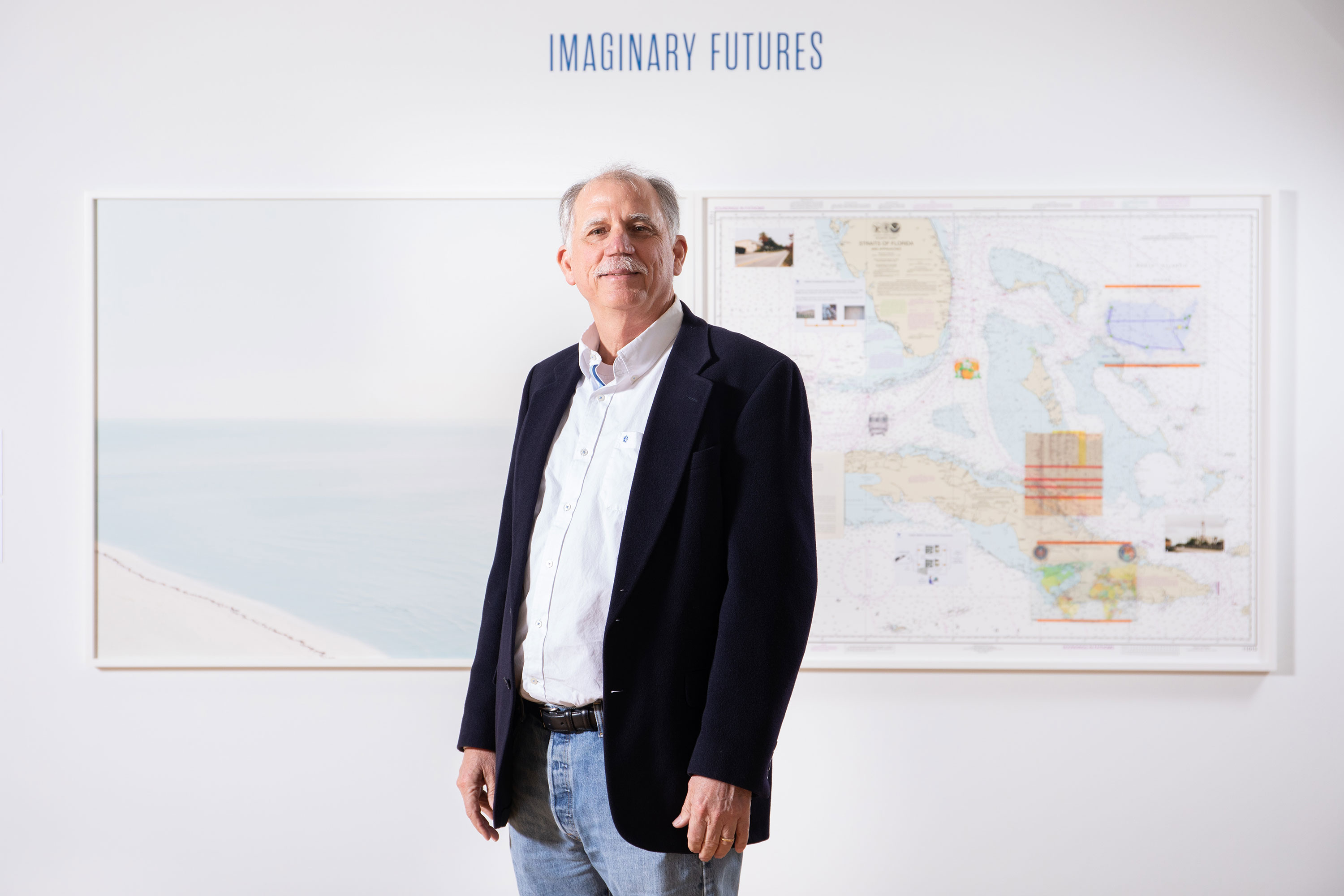“Change is coming. You can have your head in the sand about it, or you can find ways to address it.”
Portrait by Brianne Lehan and Lyon Duong/UF Photography. Artwork: "NSA-Tapped Fiber Optic Cable Landing Site, Miami Beach, Florida, United States" by Trevor Paglen, 2015, museum purchase, funds provided by The Caroline Julier and James G. Richardson Acquisition Fund and The Fogler Family Endowment
Tom Ankersen
Director, Levin College of Law Conservation Clinic; statewide legal specialist for Florida Sea Grant
A lifelong love of the outdoors led Ankersen to a career in environmental law, where he and his students work worldwide to protect critical ecosystems and help coastal communities plan ahead.
How do you describe your work?
Innovative conservation solutions through law and experiential learning
Success stories:
Ankersen and his Conservation Clinic students have helped coastal communities in Punta Gorda, Yankeetown, Cedar Key and Hernando County, Florida, prepare for storms and sea-level rise with living shorelines, oyster-reef restoration and adaptation planning and are beginning a similar project in the Florida Keys. They’re helping sea-turtle nesting beaches become more resilient, and they’ve used international law to create avenues to protection for UNESCO World Heritage sites threatened by climate change. Ankersen has also helped launch environmental law clinics at four Latin American universities.
What keeps you motivated?
“Seeing the excitement of young people getting something done in the policy space.”
Embracing the Anthropocene:
The same drive and ingenuity that gave rise to the man-made problems of the Anthropocene could help us solve them, Ankersen says. “Artificial intelligence, de-extinction, novel ecosystems, assisted evolution, geoengineering — all of these things raise ethical questions, but they’re a part of the Anthropocene. It’s worth thinking about that concept more broadly.”
This is part of a series highlighting people at the University of Florida working to protect our well-being and the health of the planet, paired with works from the Harn Museum of Art exhibition “The World to Come: Art in the Age of the Anthropocene.” See more at ufl.to/theworldtocome.
